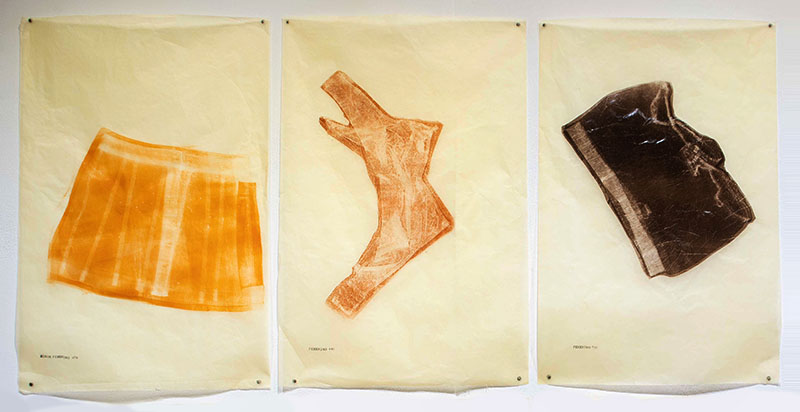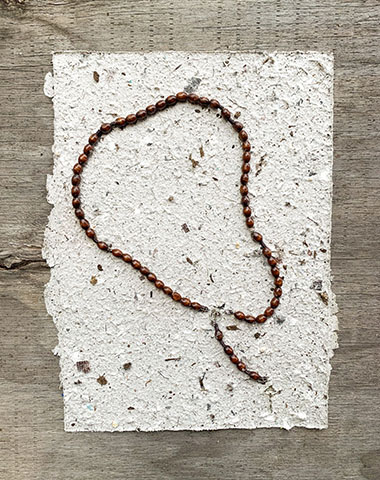¿Quienes Son?
"The disappearance of a loved one affects deeply and painfully in life those who suffer from it. A missing person is an open-ended question. They are neither dead nor alive; it's a spirit who won't let you sleep, who won't let you heal or start over. The mere fact of getting back to normal life could be considered as an insult or a withdraw. However, sometimes it's better to assume a loved one's death to avoid quitting your own life; hope can be a drug and like a drug, it can kill."
— Mother of a missing person
My work gives lost voices an identity. By embellishing these missing people's clothes, I give them a voice, and I give their family a voice. My work is about closure, and it is about reflection. Lastly, it is about the multifaceted nature of grief. There are many things unanswered about why these people go missing. These clothes represent a fragmented portrait, an extension of their identity and humanity, who are lost and yearning to be found. The use of monotypes clothing and installations stitches the ideas of hope, grief, and identity.

With the ongoing violence all through Mexico, you can find groups of people looking for missing loved ones in jungles, deserts, or empty urban land. They are looking for their son, daughter, father, mother, sister, or brother. They are not looking for justice but peace, the peace of giving their loved ones a proper burial. Most families don't have access to forensic resources, so they use what they have, a stick to poke the ground, black plastic bags, and jug of water for hope.

The piece ¿Quienes Son? (Who Are They?) represents the process when the families find a body on their searches. They catalog the clothing based on gender and age (adult or minor). It is easier to match the missing through their clothing than by DNA, this due to Mexico's backlog of DNA matching systems. The clothing represents an extension of the person's identity and by matching it to its owner it gives back their humanity.


Novenario para los Desaparecidos

Missing persons are neither dead nor alive but rather exist in state of limbo until they are found. Since December 11, 2006, more than 61,000 people have vanished due to the Mexican drug war. This has left tens of thousands of families with the excruciating obligation of searching for their loved ones to give them proper burials and achieve closure.
Most who disappear from the drug war are not reported missing or dead for fear of violent retaliation. The series Novenario para los Desaparecidos (Novenary for the Missing) is nine sheets of handmade paper, each infused with a rosary that was used in a Novenario prayer. These objects are meant to act as the certificates of death documents to give closure to grieving families. The number nine symbolizes Novenario prayer in the Catholic tradition. The Novenario is a nine-day novena (prayer) held every evening after Holy Mass. On the fortieth day after the declaration of death, a celebration is held to observe the deceased's ascension to Heaven. This body of work is the only type of closure that most family members will get for their missing love ones. For my family, this body of work is our closure for my brother. It is my hope that it can bring closure to others as well.

Jessie Burciaga is an artist working in installation, printmaking, sculpture, and assemblage. Born between the border towns of Brownsville, Texas, and Matamoros Tamaulipas, Mexico, his work reflects his strong and longstanding interest in socio-political issues along the U.S./ Mexico border. Burciaga's work shows vulnerability by accepting the painful truth and the contemporary reality of La Frontera. Rather than relying on pain as a focal point, Burciaga uses it as an anchor, tethering the realm of dreams, the subconscious, and the spiritual. His work is honest to the experiences of loss and grief, without discounting the hope for a better tomorrow. Burciaga received his BFA from the University of Texas Rio Grande Valley and his MFA from the University of Texas at San Antonio. He currently resides and works in Brownsville, Texas, where he teaches printmaking at the University of Texas Rio Grande Valley.



